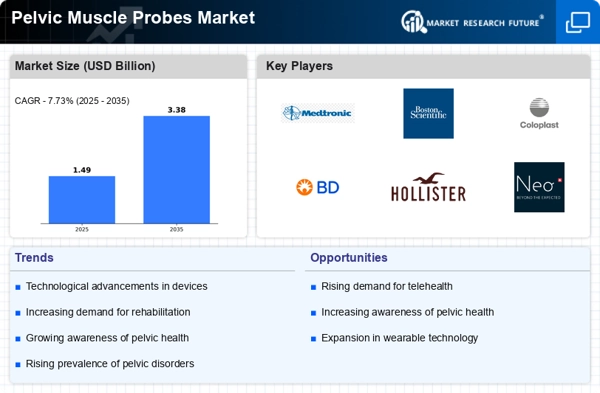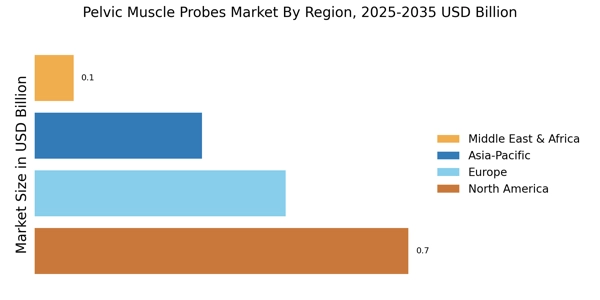Growing Geriatric Population
The Pelvic Muscle Probes Market is poised for growth due to the increasing geriatric population, which is more susceptible to pelvic floor disorders. As individuals age, the risk of conditions such as urinary incontinence and pelvic organ prolapse escalates, necessitating effective diagnostic and therapeutic interventions. The World Health Organization projects that the number of people aged 60 years and older will double by 2050, highlighting a significant demographic shift. This trend is likely to drive demand for pelvic muscle probes, as healthcare providers seek to address the unique needs of older patients. Furthermore, the emphasis on improving quality of life for the elderly population is expected to spur investments in pelvic health solutions, thereby enhancing the Pelvic Muscle Probes Market.
Personalized Healthcare Solutions
The Pelvic Muscle Probes Market is increasingly leaning towards personalized healthcare solutions that cater to individual patient needs. With advancements in data analytics and patient monitoring technologies, healthcare providers are now able to tailor treatment plans based on specific patient profiles. This shift towards personalized care is particularly relevant in the context of pelvic health, where conditions can vary significantly among individuals. The integration of pelvic muscle probes into personalized treatment regimens allows for more effective monitoring and management of pelvic floor disorders. As patients seek more customized healthcare experiences, the demand for pelvic muscle probes is likely to rise, driving growth in the market. This trend indicates a transformative phase for the Pelvic Muscle Probes Market, as it adapts to the evolving landscape of healthcare.
Increased Awareness of Pelvic Health
The Pelvic Muscle Probes Market is benefiting from a notable increase in awareness surrounding pelvic health issues. Educational campaigns and advocacy efforts are shedding light on the importance of pelvic floor health, particularly among women. This heightened awareness is encouraging individuals to seek preventive care and treatment options, including the use of pelvic muscle probes. As a result, healthcare providers are more inclined to incorporate these devices into their practice, recognizing their potential to improve patient outcomes. The market is projected to see a rise in demand as more patients become informed about the benefits of pelvic muscle probes for conditions such as incontinence and pelvic pain. This trend suggests a promising future for the Pelvic Muscle Probes Market as awareness continues to grow.
Rising Incidence of Pelvic Disorders
The Pelvic Muscle Probes Market is significantly influenced by the rising incidence of pelvic disorders, including urinary incontinence and pelvic organ prolapse. According to recent estimates, nearly 25% of women experience some form of pelvic floor disorder during their lifetime. This increasing prevalence is driving demand for effective diagnostic and therapeutic tools, such as pelvic muscle probes. As healthcare systems worldwide prioritize women's health, the focus on pelvic health is intensifying, leading to greater investments in research and development. Consequently, the market for pelvic muscle probes is expected to expand as healthcare providers seek to offer comprehensive solutions for managing these conditions. The growing awareness of pelvic health issues is likely to further propel the adoption of pelvic muscle probes in clinical practice.
Technological Advancements in Pelvic Muscle Probes
The Pelvic Muscle Probes Market is experiencing a surge in technological advancements that enhance the efficacy and usability of these devices. Innovations such as real-time biofeedback mechanisms and improved sensor technologies are being integrated into pelvic muscle probes, allowing for more accurate assessments of pelvic floor function. This is particularly relevant as the market is projected to grow at a compound annual growth rate of approximately 6.5% over the next five years. Furthermore, the introduction of wireless and portable devices is making pelvic muscle probes more accessible to patients, thereby increasing their adoption in both clinical and home settings. As healthcare providers seek to improve patient outcomes, these technological enhancements are likely to play a pivotal role in shaping the future of the Pelvic Muscle Probes Market.


















Leave a Comment